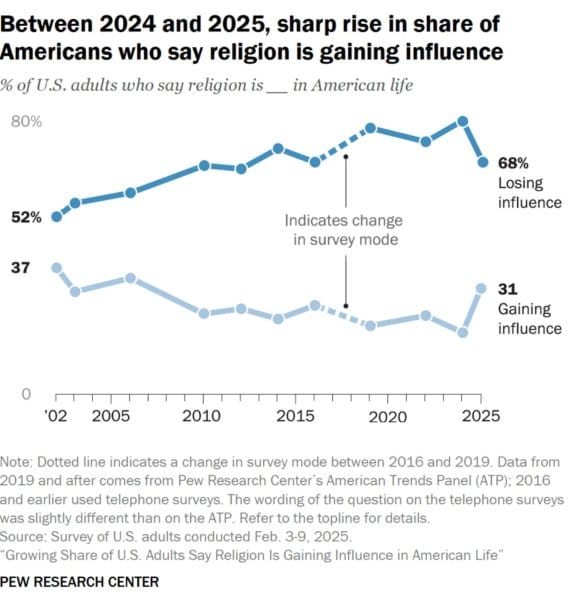Oct. 21 (UPI) — A new survey finds the number of U.S. adults with a positive view of religion is on the rise.
A Pew Research Center Poll, conducted earlier this year with results released Monday, showed a jump of 13% for those in the United States who answered “yes” to whether religion was gaining influence in American life.
Last year, Pew recorded its lowest level for religion in more than 20 years, with only 18% of U.S. adults expressing a positive view of religion in the survey, conducted in February 2024. That percentage jumped to 31% in February of 2025, the highest response in 15 years.
“Americans’ views about religion in public life are shifting,” Pew Research wrote Monday in a post on X. “From February 2024 to February 2025, there was a sharp rise in the share of U.S. adults who say religion is gaining influence in American life.”
While still a minority, the rise in positive views on religion is significant, according to Pew, which noted gains of at least 10 points among Democrats and Republicans, as well as adults of every age.
In addition to asking whether religion was gaining influence in American life, the survey combined a number of questions to determine whether U.S. adults have a positive or negative view of religion.
According to Pew, 59% of U.S. adults expressed a positive view, while 20% expressed a negative view of religion’s influence. The other 21% said religion “doesn’t make a difference.”
Of those who said religion is gaining influence, 58% of those surveyed said they feel significant conflict when it comes to their religious beliefs and American culture.
The findings were compiled from a nationally representative Pew Research Center survey of 9,544 U.S. adults.
